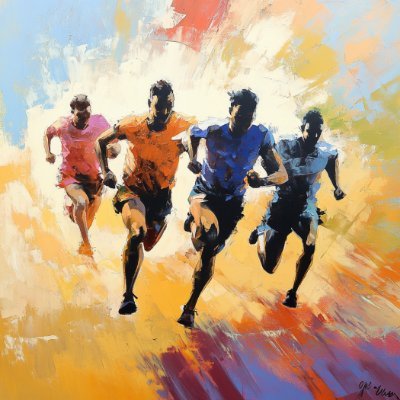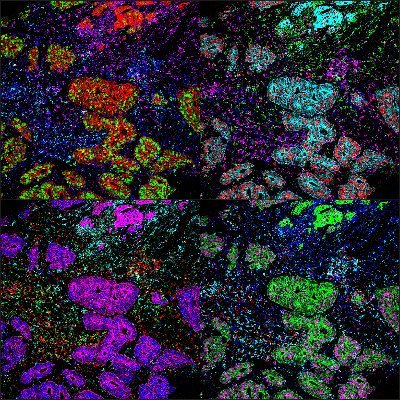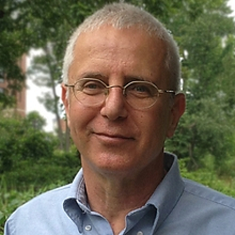
Francesca Finotello
@Francesca_Fin_
Followers
1K
Following
4K
Media
51
Statuses
2K
Assist. Prof. leading the Computational Biomedicine Group at @uniinnsbruck • Data scientist at @DiSC_uibk: precision medicine and cancer immunotherapy • Mother
Innsbruck
Joined February 2016
📢New preprint alert: #Benchmarking second-generation methods for cell-type #deconvolution of #transcriptomic data https://t.co/MhLf5Eo3yY A thread 🧵👇 1/
1
39
90
GitHub - omnideconv/spacedeconv: A unified interface to spatial transcriptomics deconvolution tools
github.com
A unified interface to spatial transcriptomics deconvolution tools - omnideconv/spacedeconv
0
9
21
GitHub - omnideconv/spacedeconv: A unified interface to spatial transcriptomics deconvolution tools
github.com
A unified interface to spatial transcriptomics deconvolution tools - omnideconv/spacedeconv
2
15
66
We provide the scientific community with an ecosystem of tools and resources, #omnideconv, that strongly simplifies the application, benchmarking, and optimization of deconvolution methods: https://t.co/4pzWXCyJBZ 5/
1
2
6
Benchmarking second-generation methods for cell-type deconvolution of transcriptomic data https://t.co/hZX9kpNnbO 🧬🖥️🧪 omnideconv #Rstats pkg https://t.co/4vyF4rkQLY Nextflow pipeline https://t.co/4vyF4rkQLY
1
21
82
@strnr Great work on the benchmarking study! ️ I'm looking forward to exploring the omnideconv package and learning more about cell-type deconvolution of transcriptomic data.
0
1
2
Thank you for highlighting our work! 🙏 #spacedeconv preprint is available at: https://t.co/jtvuso3eKp
researchsquare.com
Investigating tissue architecture is key to understanding tissue function in health and disease. While spatial omics technologies enable the study of cell transcriptomes within their native context,...
#RNAseq is unlocking new ways to study tissue architecture, giving scientists critical insights into disease development. With tools like spacedeconv, researchers can now map out how cells interact, paving the way for breakthroughs in cancer @uniinnsbruck
0
1
3
Many thanks to @tangming2005 for highlighting our work! In a joint effort with @itisalist lab, we have developed 2 additional packages for: - scRNA-seq-informed deconvolution, #omnideconv: https://t.co/H9Hf9sPZir - spatial deconvolution, #spacedeconv: https://t.co/nMULfrmCL6
4. immunedeconv, an R package for unified access to 10 computational methods for estimating immune cell fractions from bulk RNA sequencing data. https://t.co/s64Yjt7Gcg
1
5
22
Closing 2024, scverse celebrates incredible growth and collaboration! Huge thanks to everyone on this journey and our dedicated core team & management board (@fabian_theis, @Francesca_Fin_, @OliverStegle , @YosefLab, @panos_roussos, @nomad421). Here’s to an even brighter 2025!
1
4
38
anndata 0.11 is out now: https://t.co/ZpRYE9Go0I! We have some great new features to highlight as well as some breaking changes to look out for.
anndata.readthedocs.io
Version 0.12: 0.12.4 2025-10-27: No significant changes. 0.12.3 2025-10-16: Miscellaneous changes: Deprecate AnnData.*_keys() methods.@flying-sheep(#2102). Bug fixes: Deprecate__version__ and use s...
1
5
14
1/10 PREPRINT MONDAY at the SchubertLab Benchmarking TCR-Epitope Predictors with ePytope-TCR ( https://t.co/I3C3JkehlQ) Short-Summary: - 18 pre-trained public methods - evaluated on 2 benchmarking datasets - for repertoire annotation & cross-reactivity prediction
biorxiv.org
Understanding the recognition of disease-derived epitopes through T-cell receptors (TCRs) has the potential to serve as a stepping stone for the development of efficient immunotherapies and vaccines....
2
22
59
NovumRNA: accurate prediction of non-canonical tumor antigens from RNA sequencing data https://t.co/TkbcXBm62w
#biorxiv_bioinfo
0
1
3
Are you (or is someone you know) teaching AI / ML / Deep Learning this year? My forthcoming book (freely available at https://t.co/hqRA1xUPkk) will save you a lot of time. This thread will show you why.
68
432
2K
🚀 New Tool Alert! 🚀 PENGUIN 🐧is finally published in @CSB_Journal : PENGUIN is a rapid, efficient, and user-friendly tool for denoising and normalizing multiplexed spatial proteomics images! 🔬✨ 🔗 https://t.co/FFZBFHd8FE
1
5
19
TCR lovers, we are delighted to share our benchmarking of TCR specificity tools using an harmonized aggregation of public databases.
biorxiv.org
Identifying T cell receptor (TCR) specificity is crucial for advancing the understanding of adaptive immunity. Despite the development of computational methods to infer TCR specificity, their...
0
15
61
🚀 Proud to launch ⭐Path2Space⭐ — the first AI to discover spatial biomarkers for cancer treatment! It predicts spatial gene expression from histopathology, enabling large-scale tumor microenvironment profiling. https://t.co/kYFfWEYqyi 🧵1/11
11
113
333
**Please Retweet (Re-X?)** 🔥Postdoc #jobs in Spatial / Single Cell Omics Looking to become a #leader in #SpatialBiology? Love NGS & #MachineLearning? #Positions @harvardmed @broadinstitute
https://t.co/iDGqu2zj4P
#hiring #lab #boston #research #aiml #biotech #Science
linkedin.com
Today’s top 3,000+ Postdoctoral Research Assistant jobs in United States. Leverage your professional network, and get hired. New Postdoctoral Research Assistant jobs added daily.
0
9
17
RNA sequencing depth guidelines for the study of alternative splicing https://t.co/E1RgTdvbKL
#biorxiv_bioinfo
1
18
57
What if you could make physics diagrams come alive? At #UIST2024, we will be presenting our paper, Augmented Physics, an ML-Integrated Authoring Tool for Creating Interactive Physics Simulations from Static Diagrams Co-authors: @Freya_Wyy @nandizhang_ Jarin @rubaiat @ryosuzk
107
1K
6K
Interested in benchmarking computational methods in computational biology, generally? Save the date, submit an abstract, join us next March in Ascona! Conference website: https://t.co/wBqBh5yFj4 Please retweet and/or tell your colleagues!
1
37
72
Thank you for highlighting our work! 🙏 #spacedeconv preprint is available at: https://t.co/jtvuso3eKp
researchsquare.com
Investigating tissue architecture is key to understanding tissue function in health and disease. While spatial omics technologies enable the study of cell transcriptomes within their native context,...
#RNAseq is unlocking new ways to study tissue architecture, giving scientists critical insights into disease development. With tools like spacedeconv, researchers can now map out how cells interact, paving the way for breakthroughs in cancer @uniinnsbruck
0
1
3


















